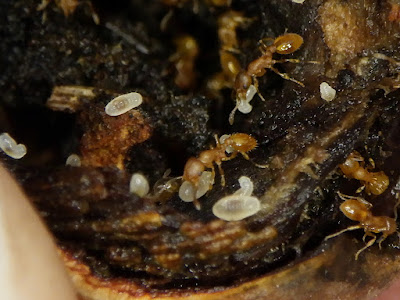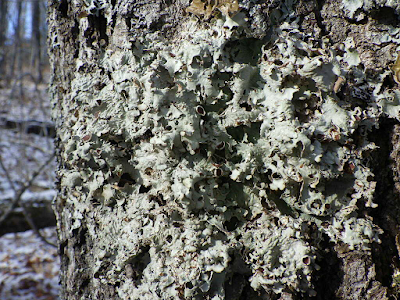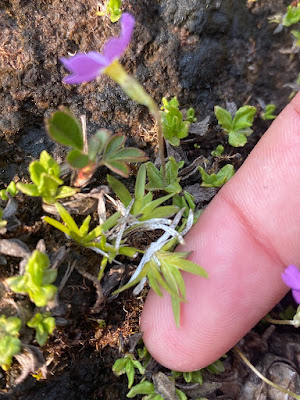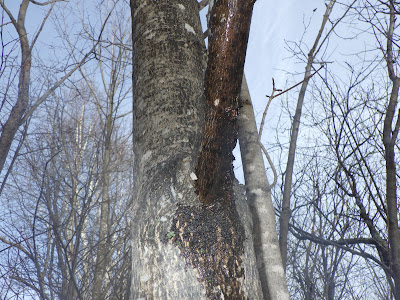Life Inside an Acorn
I made my way out to a nice stand of northern red oaks, planning on looking for bud galls but got distracted by other things. Today's focus ended up being finding things living inside of acorns. As I was walking along the trail I noticed that some of the acorns were just staring to sprout and send out their radicles. This reminded me of a little inquiry project I did last year when it was getting pretty late in the spring and all of the viable acorns had sent out their radicles (some were even starting to leaf out), so it was obvious which ones were not viable. I assumed that the main culprit was an acorn weevil (Curculio sp.), but decided to cut open ten acorns to see why they didn't germinate. Of those ten, eight of them had obvious weevil damage (usually the larva was still present). To my surprise two of them had cryptic cells of a gall wasp in the genus Melikaiella! With this in mind, I was curious what else I might find inside of these acorns.
The most charismatic find of the day were acorn ants (Temnothorax sp.). These ants will find acorns with small holes in them and make it their home. Luckily for them there were plenty of acorns with small exit holes from various insects in the area. Some of the acorns had hundreds of ants within them. As I was watching it seemed like some of the large colonies were breaking up to establish new ones in new acorns. Many species of Temnothorax ants are parasitized by slavemaker ants (often other species of Temnothorax) which will steal pupa from the colony to enslave as workers in their own colony. Maybe I actually saw a slavemaker abducting the pupa, who could say! It seems that there are a few possible candidates for which species of ant I saw today. It also looks like each Temnothorax species that establishes their own colony are parasitized by a handful of slavemaker species, along with some less detrimental inquilineous species. I'll have to try and find some keys and take a closer look to try and ID any species I come across and see if I can see and understand these interesting behaviors. These dynamics - one species of ant hosting many closely related species of parasitoids/inquilines are very similar to what I've seen rearing gall wasps. Many of the rose galls (Diplolepis sp.) I have reared host at least one inquiline (closely related Periclistus sp.) and sometimes up to 13 different parasitoids (Chalcid wasps). Diplolepis seems to be especially susceptible to parasitoids and inquilines, but other wasps such as Diastrophus sp. and cynipids also boast pretty high numbers. I still cannot believe the hyper-biodiversity with such specific niches found in such a small area in these gall communities. Although to a lesser extent, it seems like acorn ant colonies also host a great deal of biodiversity. Of all things, when I was comparing these ant colonies with gall wasps, they both made me think of the role of beavers in the ecosystem. Beavers are considered a keystone species, largely because of their role in shaping the landscape as an ecosystem engineer. I think of gall wasps and these ants as micro-keystone species and micro-ecosystem engineers. They fit both the definition of keystone species (significantly supports the food web of an ecosystem) and ecosystem engineer (significantly modifies habitat), but just on a small scale.















Comments
Post a Comment